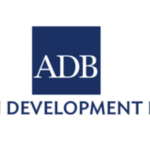The cabinet irregular meeting convened today, June 12, heard the results of the 2020 nationwide population and housing census.
The latest census counted the current population of Mongolia at 3,296,866 and the number of households at 897,427. The previous national population and housing census in 2010 counted 2,756,685 people. Since the 2010 population census, the average annual population growth rate has been at 2.2 percent. Average household size or the average number of persons per household is 3.6 and mean age at first marriage is at 27.7.
Speaking of population growth, the Ministry of Labor and Social Protection introduced in 2019 a revised population projection of Mongolia, which expects the population will increase to four million by 2030 and to five million by 2045.
In terms of population age structure, the share of children aged 0-14 comprised 31.5 percent of the total population, people in the 15-64 age bracket make 64.4 percent while people aged over 65 are 4.1 percent of the population.
46 percent of Mongolia’s population resides in capital city of Ulaanbaatar, 19 percent living in the Khangai region, 16 percent in the central region, 13 percent in western areas and 7 percent in eastern aimags.
The once-in-decade census also revealed that 7 percent of the population or around 122,300 Mongolians have been living abroad for more than 6 months.
Population density or the number of people per sq. km in Mongolia has increased by 0.4 to 2.1 sq. km, according to the census.
95.1 percent of the population aged over 10 has attained some level of education and literacy rate for people aged 15 and above is 98.7 percent. Also, 87.8 percent of all residents aged above 6 uses mobile phones and 64.7 percent are internet users.
Around 106,400 people live with some form of disability and they account for 3.3 percent of total citizens of the country.
19,600 census staff and officers worked throughout the population and housing census, which officially launched in January 2020.











